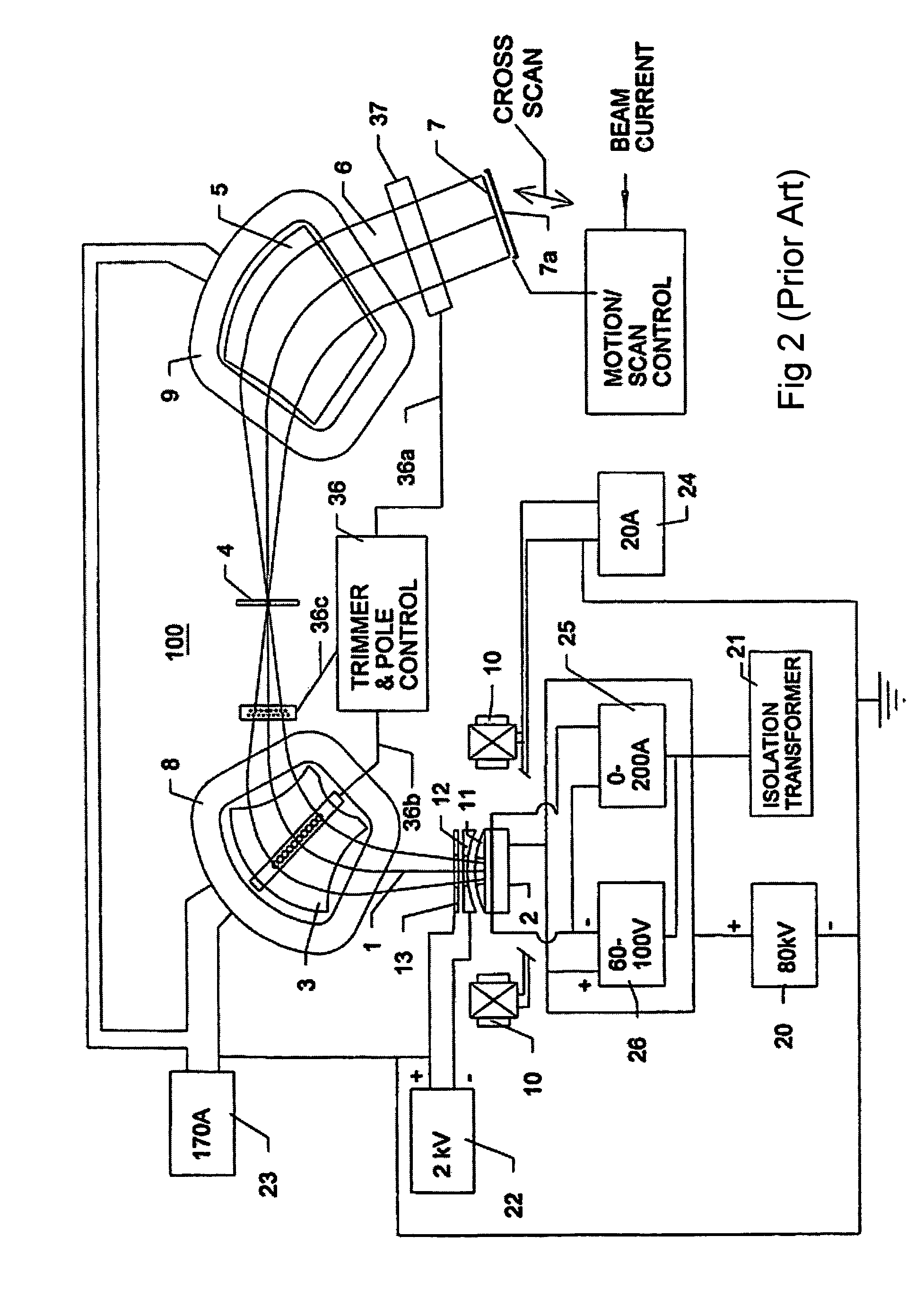High aspect ratio, high mass resolution analyzer magnet and system for ribbon ion beams
a technology of analyzer magnet and ribbon ion beam, which is applied in the field of mass analysis of ribbon shaped ion beams, can solve the problems of two-magnet system severe drawbacks, complex and expensive, and increasing difficulty in magnetic mass analysis and ion beam purification
- Summary
- Abstract
- Description
- Claims
- Application Information
AI Technical Summary
Benefits of technology
Problems solved by technology
Method used
Image
Examples
Embodiment Construction
I. The Subject Matter as a Whole Comprising the Present Invention
[0074]In its simplest form, the present invention comprises an analyzer magnet having a pair of aligned bedstead coils formed as an array; is able to bend a high aspect-ratio ribbon ion beam through an angle of at least 45 degrees and up to an angle of about 110 degrees; and can focus the ribbon beam such that the desired ion components pass through a resolving slot while the unwanted ion components are not transmitted, so as to provide mass analysis. Also, the long transverse axis of the ribbon ion beam can exceed 50% of the bending radius and this axis is aligned with the magnetic field generated by the analyzer magnet.
[0075]A pair of bedstead coils is placed in mirror-symmetry as an aligned array; carries electrical current within the analyzer magnet structure; and generates a magnetic field characterized by intrinsically good field uniformity and well-contained fringe fields (essentially zero except in the region w...
PUM
 Login to View More
Login to View More Abstract
Description
Claims
Application Information
 Login to View More
Login to View More - R&D
- Intellectual Property
- Life Sciences
- Materials
- Tech Scout
- Unparalleled Data Quality
- Higher Quality Content
- 60% Fewer Hallucinations
Browse by: Latest US Patents, China's latest patents, Technical Efficacy Thesaurus, Application Domain, Technology Topic, Popular Technical Reports.
© 2025 PatSnap. All rights reserved.Legal|Privacy policy|Modern Slavery Act Transparency Statement|Sitemap|About US| Contact US: help@patsnap.com



